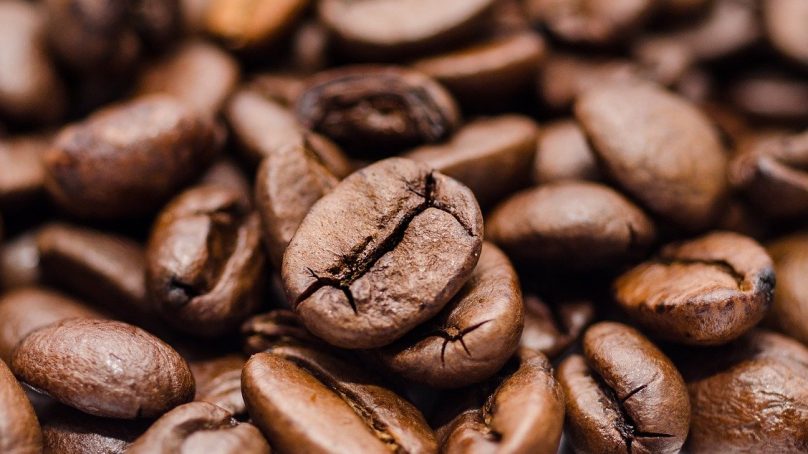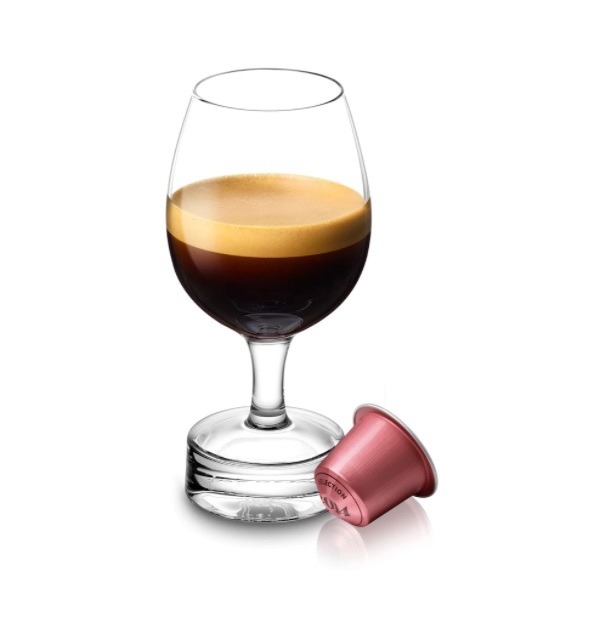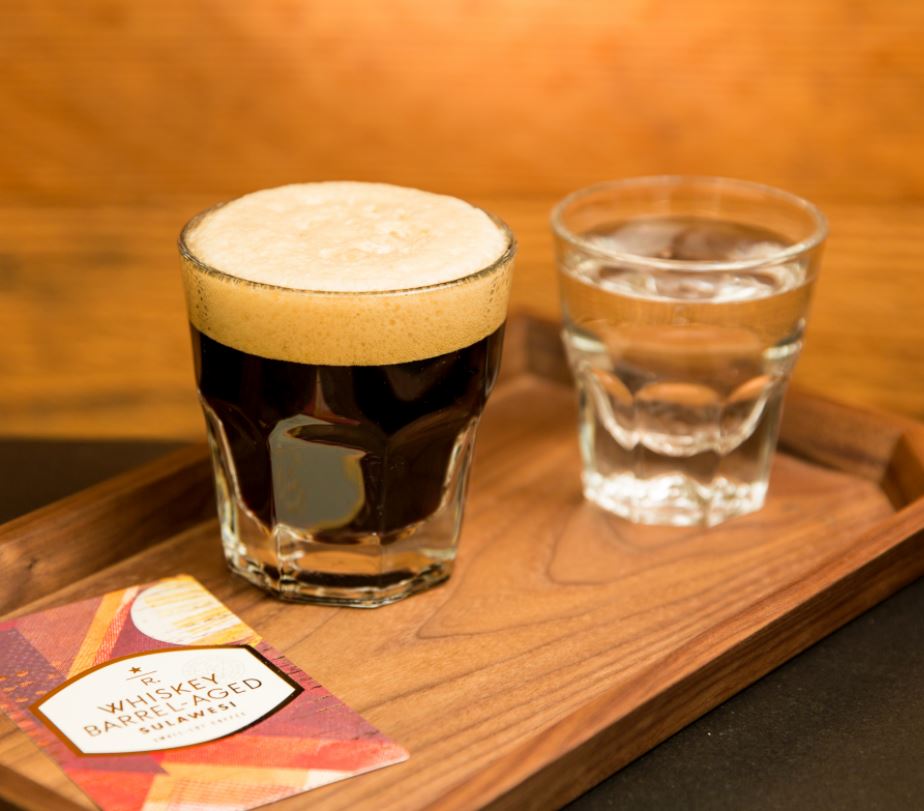
According to the International Coffee Organization, in 2019/20, the world coffee consumption is estimated at 169.34 million bags, 0.7% higher than it was in 2018/19. As per the organization, COVID-19 presents considerable downside risk to global coffee consumption. Currently demand is estimated to exceed production, projected at 168.86 million bags, by 0.47 million bags in coffee year 2019/20. However, the situation is evolving quickly and impacting both supply and demand.
The popularity of this cross-border drink is ever-growing, and innovation in its production techniques and blends is following suit. Lately, the trend of aged coffee is on a rise on a global level, and different coffee makers around the world are trying to innovate with it.
The process

Joseph El Khoury
Joseph El Khoury, Beverage Innovation Manager – Lebanon, Africa & Levant at Monin explained how aging coffee works.
The coffee aging procedure takes place during six months up to three years. It is regularly monitored and the beans are rotated to distribute moisture and prevent mold and rot. As green coffee ages, its flavor characteristics change. If it is stored in a cool and dark place, it would lose some of its acidity. On the other hand, coffees stored in warehouses located in hot, humid tropical port cities, can change in flavor dramatically and rapidly.
Coffee delivered for roasting soon after harvest and processing is called a new crop, whereas a coffee that has been held in warehouses for a period before delivery, it is called an old crop. The differences between new and old crops may be minor. New crop may be better because it is brighter and tastes fresher, whereas old crops may taste dull or woody. At times, roasters combine old and new crops of the same coffee, aiming at a more complete version of the same flavor profile.
El Khoury explained that aged or vintage coffees, however, are a different matter. Traditionally aged coffees, which are rare, may have been held in warehouses for anywhere from three to ten years, and can be superb: sweet, full almost to a fault, syrupy but clean-tasting.
A kind of accelerated aging is now performed in Indonesia, (Sumatra and Sulawesi) wherein the beans are deliberately exposed to moist air, much like India’s Monsoon Malabar, or exposed to humid air in port cities. These aged coffees lose acidity and gain body.
Some defects can also be muted but typically due to the cost of holding the green coffee for an extended period of time the green selected for aging is of exceptional quality. “During the aging process, the coffee bags are rotated to allow the coffee to breath and evenly develop.”
He added: “But please be careful ! Aged coffee and old coffee are not the same thing. Old coffee will taste boring and lifeless while aged coffee actually improves. Aged coffee will typically start with a coffee that is high in body and low in acidity. The idea is to bring flavor out, not create a new flavor.”
After roasting, the coffee needs a longer rest time to fully even out and gain the best taste profile possible. “Typically, aged coffees taste best at a dark roast which helps to accentuate the body.”
Historically due to coffee being shipped in wooden ships that took almost a year to reach far destinations such as the United States much of the coffee coming from outside of the Americas into the United States was either aged naturally or old.
Nespresso’s first aged coffee Limited Edition
 Back in 2017, for the first time, Nespresso offered coffee lovers the chance to taste an aged coffee with the launch of its latest Limited Edition, Selection Vintage 2014. Much like fine cheeses, meats and vinegars, coffee too can be expertly aged for a unique vintage result that is rich, mellow and deliciously velvety. Aged coffee is special and sought-after, deliberately aged over several years, allowing it to develop new sensory qualities over time, as said El Khoury. Made from fresh Arabica coffee sourced from high altitudes in the Colombian highlands and plains, Selection Vintage 2014 was harvested three years ago and then meticulously aged. This resulted in a complex taste with elegant woodiness, softened fruity notes and a smooth velvet-like texture.
Back in 2017, for the first time, Nespresso offered coffee lovers the chance to taste an aged coffee with the launch of its latest Limited Edition, Selection Vintage 2014. Much like fine cheeses, meats and vinegars, coffee too can be expertly aged for a unique vintage result that is rich, mellow and deliciously velvety. Aged coffee is special and sought-after, deliberately aged over several years, allowing it to develop new sensory qualities over time, as said El Khoury. Made from fresh Arabica coffee sourced from high altitudes in the Colombian highlands and plains, Selection Vintage 2014 was harvested three years ago and then meticulously aged. This resulted in a complex taste with elegant woodiness, softened fruity notes and a smooth velvet-like texture.
What is IFP Chilling Aged Coffees?
According to El Khoury, this is a very unique coffee aging method that originated and grew popular in Japan. Under this process, green coffee beans are aged in constant temperature and humidity conditions, above initial freezing point (IFP). That’s the reason it is named IFP Chilling Aged Coffees. The process is considered slow: At a 75 percent humidity, it takes between 18 days to two months to age green coffee beans. Nowadays, IFP Chilling Aged Coffee is gradually becoming coffee connoisseur’s favorable taste. “It is rich and sweet,” he added.
A new hit: Barrel-aged coffees
Combining alcohol and coffee in one delicious drink is an age-old pastime. Over the last few years, the combination has become more and more popular. Today, baristas and bartenders everywhere are playing with the potent pairing. The newest trend for mixing coffee and alcohol is barrel aging—putting fresh, green coffee in barrels previously used to make whiskey, gin, rum, wine, and other varieties of liquor. According to him, barrel-aged coffee beans can be brewed hot or cold and sipped as is. They can also be blended into fresh new cocktails, exploring new depths of distilled flavors.
Adding barrel-aged coffee to a roastery’s lineup not only increases customer interest, it also gives roasters a creative challenge. “Which coffee will do best in the barrel? How long should the coffee age in the barrel? Where is the balance between barrel influence and roasting process?”
Coffee roasters have started barrel-aged programs out of curiosity or convenience. For others, it is a strategic collaboration with a distillery.
Adding a unique product such as barrel-aged coffees to café menus encourages customers to veer a little away from their usual order, increases engagement with your brand, and gives your baristas something interesting to sell—or upsell.
Barrels can be expensive—$150–$300 on average and their quality is hard to control. After the barrel is constructed, it is charred, then sent to a distillery or winery. After a barrel is used to impart its flavors and aromatic compounds—those dreamy vanilla or
caramel notes—on an alcohol, the spirit maker usually discards it in favor of a fresh barrel before making the next batch of hooch. But for a brewery or a coffee roastery, these barrels are full of spirited goodness and are a hot commodity.
After aging the green coffee beans in the spirit barrels, we check them periodically for the perfect aroma and moisture level we’re looking for. “Once we feel the beans are ready, we then pull them from the barrels and prepare the beans for roasting with a two day resting process.” He explained that one of the biggest challenges in roasting coffee is the raw beans absorbing whatever smells are around. There are two ways to deal with this: Roast the beans quickly, or use those smells to your advantage. Many contemporary coffee roasters are doing the latter, as they age raw beans in wine, whiskey or rum barrels. This intensive aging process that takes 8+ weeks, marries the flavors of vanilla, caramel, oak and coffee.
Roasted in small batches using our wood-fired roaster, these beans are roasted to full-city to bring out the best of flavors. During the roasting process, all alcohol is evaporated but all aromas are preserved. “This is not your morning coffee, it is a coffee experience,” he assured. “Whether you enjoy this experience with friends, family, after dinner or fireside, it’s a cup of conversation that brings people together.”
Some examples about barrel-aged coffees include Bourbon barrel coffee, a full-bodied and balanced cup with notes of dark chocolate, charred wood, oak tannins, and hints of
lingering vanilla from the barrel-aged bourbon. Rum barrel coffee which boasts a flavor of molasses- and toffee-inflected beans with hints of raisin and warming spices. Beer barrel coffee which has chocolaty notes from porter barrels, and herbal flavors from IPAs, all sporting hints of yeastiness. There are also wine barrel coffees. These beans have a bold, distinct flavor. Using Cabernet Sauvignon barrels, which “not only impart a fruity snap and slight sweetness to the coffee, but also a depth and richness,” while Merlot fans will find a milder, rounder brew in Merlot-inflected beans.

The Gin barrel aged coffee, which is aged with botanicals of juniper, citrus peels, verbena, cucumber and lavender from the distillation process. The result is a
balanced cup with notes of florals, citrus, oak, and a lingering spicy finish. A favorite among baristas- especially as cold brew.
In 2017 too, Starbucks launched the chain’s new whiskey barrel-aged coffee. It was called Starbucks Reserve Whiskey Barrel Aged Sulawesi. It was composed of Indonesian coffee beans stored in empty American oak-aged whiskey barrels. The barrels were hand-rotated for several weeks to ensure that all the beans came into contact with the oak. The roasting process burns off all alcohol, but the beans are said to still retain the whiskey flavor and aroma.
According to El Khoury: “Rum aged coffees are best in espresso while whisky works best in French press, as for gin aged coffee it’s just amazing as a cold brew option,” he explained. He added: “What is surprising, is that the taste is even more pronounced when coffee is cooled down.”
El Khoury said that such coffees can be a great option for Arabic countries or markets seeking non/low alcoholic alternatives.
Add to Favorites












